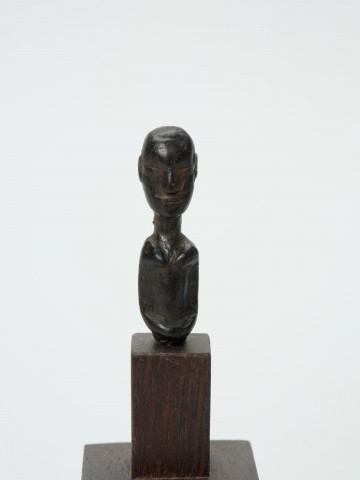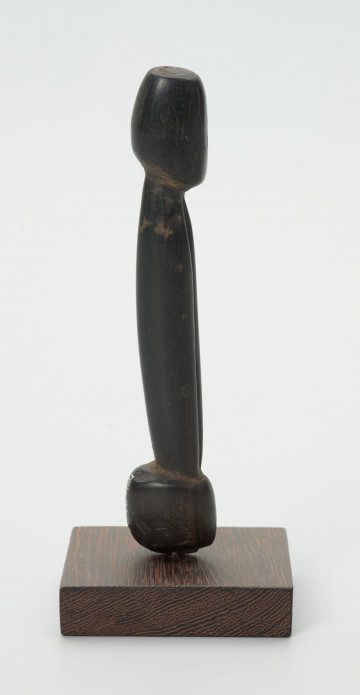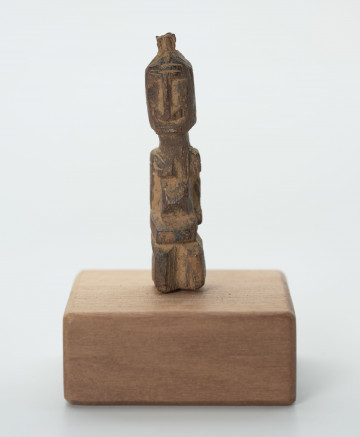
Fetish
między 1951 — 2000
National Museum in Szczecin
Part of the collection: Collection of Dogonian art
The Bandiagara Escarpment inhabited by the Dogon and its surroundings became part of the French colonies between 1894 and 1960. Initially, the French preserved the institution of traditional chiefs, with whom agreements on protectorate were signed. However, since 1914 they stopped taking the local tradition into account and often appointed as chiefs of cantons newcomers from completely different regions of the country who were representatives of foreign ethnic groups. Nevertheless, the Dogon felt great relief after the occupation of the territory of the Inner Niger Delta by the French, because the fighting between the local states ceased. The robbery attacks of the Tukulor and the Mossi from Jatenga and the slave trade were stopped. Other positive aspects of the arrival of the French were the introduction of schooling for children, the construction of wells and roads. Their arrival also had adverse effects. Taxes were imposed, which were the cause of many rebellions. The Dogon fled from the tax collectors and settled in areas that were difficult to access. The forced conscription to the French Army was also perceived negatively. The inhabitants of the Bandiagara Escarpment fought in both World Wars, and in the colonial wars waged by France. The process of regaining independence by French colonies in West Africa took several years. On 5 August 1960, Burkina Faso (formerly Upper Volta) proclaimed its independence, and a few weeks later, on 22 September 1960, an independent state, which took the name Republic of Mali, was created. The borders of these newly created states divided the territories inhabited by the Dogon, although the vast majority became part of the Republic of Mali.
Ewa Prądzyńska
Author / creator
Dimensions
cały obiekt: height: 6,2 cm, width: 1,5 cm
Object type
sculpture
Creation time / dating
Creation / finding place
Identification number
Location / status

między 1951 — 2000
National Museum in Szczecin

między 1951 — 2000
National Museum in Szczecin

między 1951 — 2000
National Museum in Szczecin
DISCOVER this TOPIC
Museum of King Jan III's Palace at Wilanów
DISCOVER this PATH
Educational path